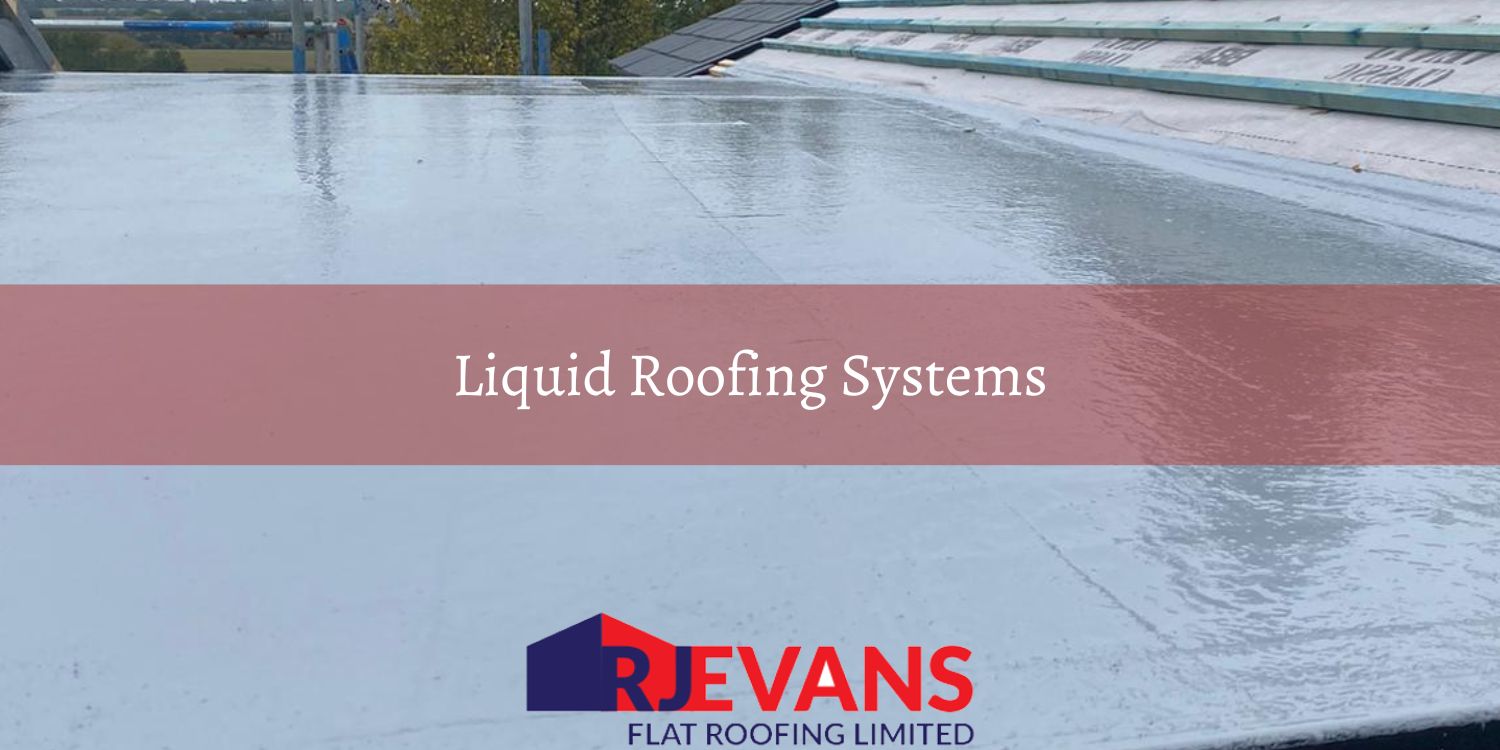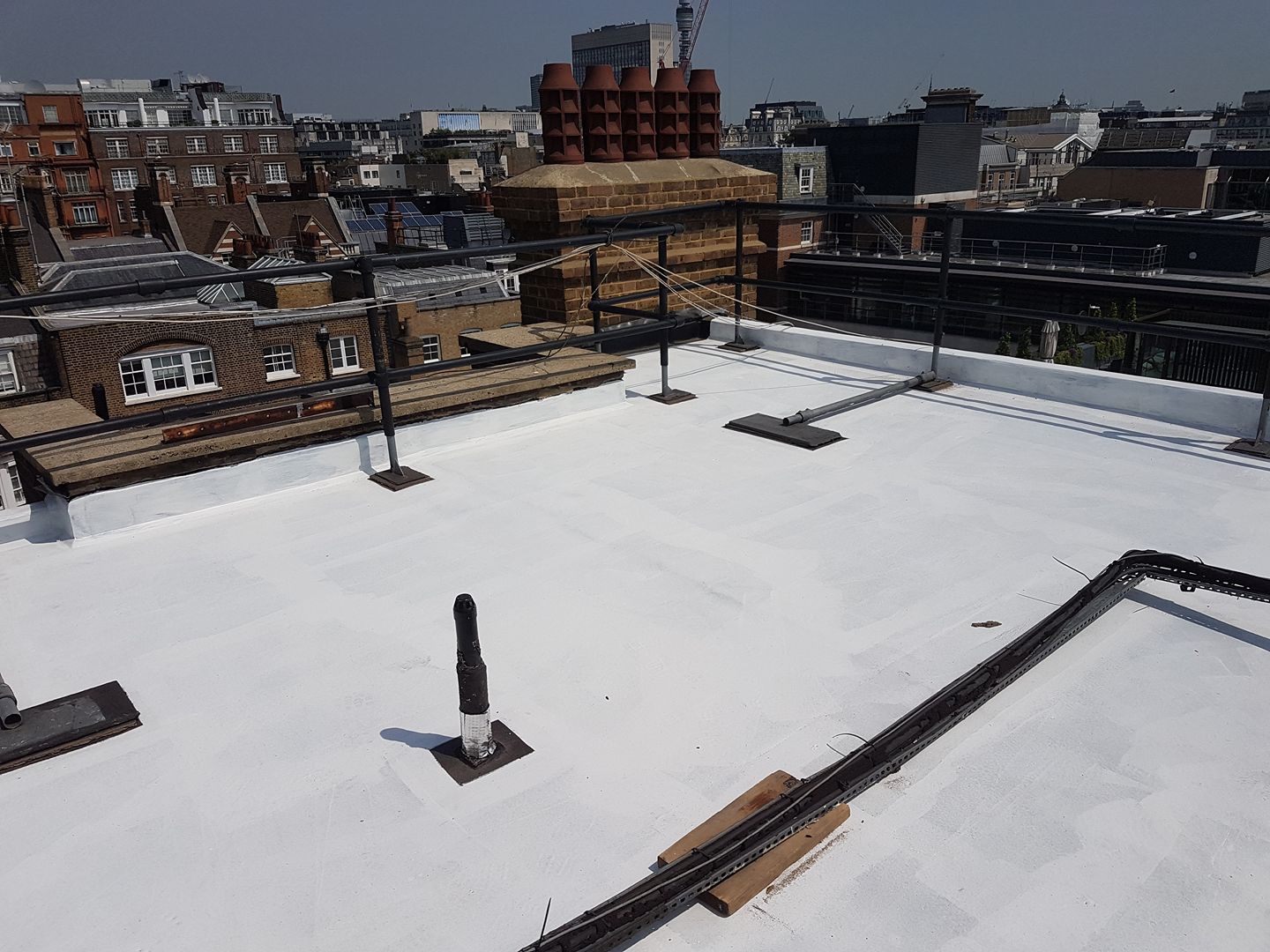I agree Our site saves small pieces of text information (cookies) on your device in order to deliver better content and for statistical purposes. You can disable the usage of cookies by changing the settings of your browser. By browsing our website without changing the browser settings you grant us permission to store that information on your device.

Liquid roofing systems refer to a type of roofing solution where a liquid coating or membrane is applied directly onto the roof substrate. This liquid applied roofing forms a seamless, waterproof, and protective barrier. Liquid systems are typically used for waterproofing flat roofs. They can be applied to various substrates, including; concrete, metal, or existing roofing materials. Liquid roofing products come in different forms including; liquid asphalt, polyurethane, silicone, or acrylic coatings. Liquid applied membranes are spread, painted or sprayed onto the surface of a flat roof. Once cured, liquid applied products create a flexible and resilient roofing membrane. The properties of liquid roofing systems are; high water resistance, UV radiation, and weathering. Liquid systems are valued for their durability, ease of application, and ability to conform to complex roof details. As liquid system continue to evolve they are an increasingly popular choice for both new construction and roof restoration projects.

At RJ Evans roofing we are able to install, repair and maintain a full range of liquid roofing systems. Whether you want a liquid system for a new or existing roof our professional team will be able to help you. We have an in-depth knowledge on all types of liquid systems including fibreglass (GRP), liquid rubber and liquid plastic. We have teams who operate across London and throughout the UK. As professional roofing contractors we ensure every member of our team is a fully accredited liquid roofing specialists who is fully insured. And with all of our new liquid systems we offer insurance backed guarantees.
If you would like a quotation or any information about liquid waterproofing systems please get in touch with us by clicking here or call us now on 01277 375 511. One of our friendly team will be happy to assist you.
A liquid applied roof is ideal for both the waterproofing of new flat roofing and as overlay on an existing roof such as single ply. On larger projects a liquid waterproofing membrane is a particularly economical choice. There are several reasons for this. Firstly, liquid waterproofing systems can be applied to a roof all year round (the only requirement is the temperature is above zero degrees). Secondly, the disruption to the building being waterproofed is minimal due to the liquid solution not needing a naked flame during the installation process (the waterproofing is applied as a cold liquid). And finally roof waterproofing systems which use a liquid coating is often waterproof immediately upon application. This will depend on the brand used, but all systems are waterproofed within a maximum of two hours. Obviously, this is a big benefit as it minimises the time the roof is out of action.
Another time where you would want to use a liquid system is when you have a lot of complex roof details. This is where liquid comes into its own as it can effortlessly mould around even the most intricate detailing. This ensures any flat roofs with fine detailing such as soil vent pipes and ventilation are finished to a high quality standard.
• Liquid waterproofing requires no flame during the installation process. This is because it is a cold applied liquid waterproofing. This has two major benefits. Firstly it is beneficial from a health and safety perspective. And secondly it is convenient due to minimal disruption to the property whilst works are carried out.
• Liquid waterproofing systems can be applied all year round1. A liquid applied system can be installed at any time of the year, with the only requirement being the temperature is above 0 degrees. This makes a liquid waterproofing an excellent choice for projects which will be undertaken in winter months.
• A liquid waterproofing membrane is cost effective. This is due to the durability of the material and the ease of conducting flat roof repair work. This makes liquid one of most cost effective roofing options when you consider the cost per year of service. Depending on the purpose of the flat roof which is waterproofed, the lifetime could be in excess of 25 years.
• Easy to Maintain and Repair. As liquid waterproofing is applied cold (flame free), repairs can be carried out without any inconvenience to those using the building (obviously, this is a huge advantage with commercial properties). Also, due to being a liquid system the defective area is the only area which will have to be repaired saving the cost of removing large sections of the flat roof which is the case with various alternative systems.
• Excellent Elasticity and Tensile Strength2. Liquid waterproofing can cope with the natural movements flat roofing typically endure over the course of the year. This means the probability of cracks and damage to the surface are extremely unlikely if the waterproofing system was correctly installed.
• Waterproof upon Application. Depending on the system used a liquid roof will be waterproof instantly or in the worst case within 2 hours of application. This timeframe can be different in situations which involve abnormal temperatures.
• Liquid waterproofing is ideal for flat roofs which require complex detailing. Due to it being a liquid roofing system, even the tightest of spaces and tiniest of details can be easily filled. This ability to form perfectly to the area it is applied to makes liquid stand out when compared to other roofing membranes.
• Vapour Permeable. This inherent vapour permeability of liquid systems means the moisture inside the building which is waterproofed can escape. This prevents ventilation problems occurring over the long term.
A liquid overlay is often a great way to save money. A flat roof refurbishment using a liquid overlay involves covering the current roofing material with a liquid waterproofing system. This obviously saves money as it removes the cost of removing the existing roof before a new roof is applied. An overlay like this can be applied to a variety of flat roof types. For example, a liquid roofing overlay to an existing felt roof would include the following steps. The first step would be to clear the roof of any debris and moss. Then with a heat gun to dry up and damp areas on the felt roofs surface. Chases will need to be cut into any walls in preparation for the installation of any flashings. If there is any loose felt on the existing roof it will need to be cut away. The same applies if there is any rotten board underneath the loose felt. The area will need to have new board applied and to be recovered in felt to give a level surface to apply the liquid overlay. Once this is done the liquid overlay can be applied to the complete the roof refurbishment. Liquid waterproofing systems can be used for the entirety of the roof including flashings (most systems are self terminating). Liquid overlays have great elasticity allow them to cope well with thermal movement. If you would like added protection solar reflective paint can be applied to the finished roof.
The use of a liquid waterproofing system to fix a damaged area of a roof is a good option as it is a fast process and does not require disruption to other parts of the flat roof. Another bonus is the absence of any hot works to carry out the repair. Also, if repair work is needed around plant machinery, soil vent pipes, or skylights, liquid roofing is the obvious choice due to it's ability to effectively waterproof complex details.
Using a liquid membrane for an inverted roofing system is a great choice. As well as the benefits mentioned above, you can also benefit from a product such AH+3 which benefits is roof resistant (which obviously makes it a great option for green roofs).
Green roofs are an important advancement if integrating and supporting existing habitat into the building area. Green roofs increase the roofs thermal efficiency, helping to keep the building cooler in the summer months and warmer in the winter months. This can mean substantial materials are required depending on the green roof system. Green roofs are also specifically designed to hold onto water and release it gradually, thus relieving the pressure on the surrounding drainage systems. If the waterproofing system installed beneath the green roof fails, the works required to get to the substrate to remedy the issue can be very onerous. The entire area has to be cleared to reach the waterproofing system. This is an expensive and time-consuming exercise. Also, the entire green roof will have to be reinstalled, further costs. Liquid waterproofing is seamless and therefore has minimal chance of failure on field or upstand areas. Most failures of single ply and felt occur in the seamed or field detail areas. Therefore, it is a more effective system to install when a green roof is to be part of the roof design as there are no seams to fail in the first place.
A liquid membrane is in simple terms a waterproofing membrane that is fluid. The most popular systems are polyurethane. These can vary in quality and solvent content but ultimately are installed in a similar fashion. Once the liquid reacts with the atmosphere when the airtight container is opened, it begins to cure. Ultimately forming a seamless waterproof membrane. Installers typically spread the liquid onto the substrate surface, typically using brushes or rollers. Some systems are two coats, so there would typically be a period of 24 hours or so between coats. This allows the base coat surface to cure. Or a wet-on-wet system, where a topcoat is installed onto the base coat once it has soaked through the reinforcement membrane, normally a glass fiber matt or polyester fleece.
Warm roofs improve the thermal efficiency of a building. A liquid warm roof is quite simply a traditional warm roof build up, typically consisting of vapour barrier, then insulation, finally a liquid roof coating is applied.
Any roof constructed has an expected lifespan. Single ply and felt for example, if applied correctly can last for 20/25 years. A liquid roof overlay is a very cost-effective way that a roof can be given a new lease of life. It is much more cost effective than a complete re-roof. Providing the substrate is intact a liquid coating can be applied to the existing substrate. At the same time additional insulation can also be installed to increase or bring up to regulations. Overlays offer a number of advantages, the main one being that a complete strip up and reroof can cause building movement, causing cracks to appear in walls. Importantly also, some modern liquids have a better fire rating than older systems (Brooft4), therefore increasing the safety of the building as fire spread is reduced. Once installed, liquid systems are very durable and can last between 10 and 25 years.
• Experienced team of Fully Accredited waterproofing system specialists. We have operatives with more than 40 years’ experience.
• We provide a range of FREE quotations and solutions for all projects.
• Insurance Backed Guarantees.
• Excellent Customer Support throughout project.
• Rated 5 out of 5 from our previous customers.
If you would like a quotation or any further information about liquid waterproofing systems, one of our friendly waterproofing experts will be happy to assist you. Please get in touch with us or call us now on 01277 375 511.
.
